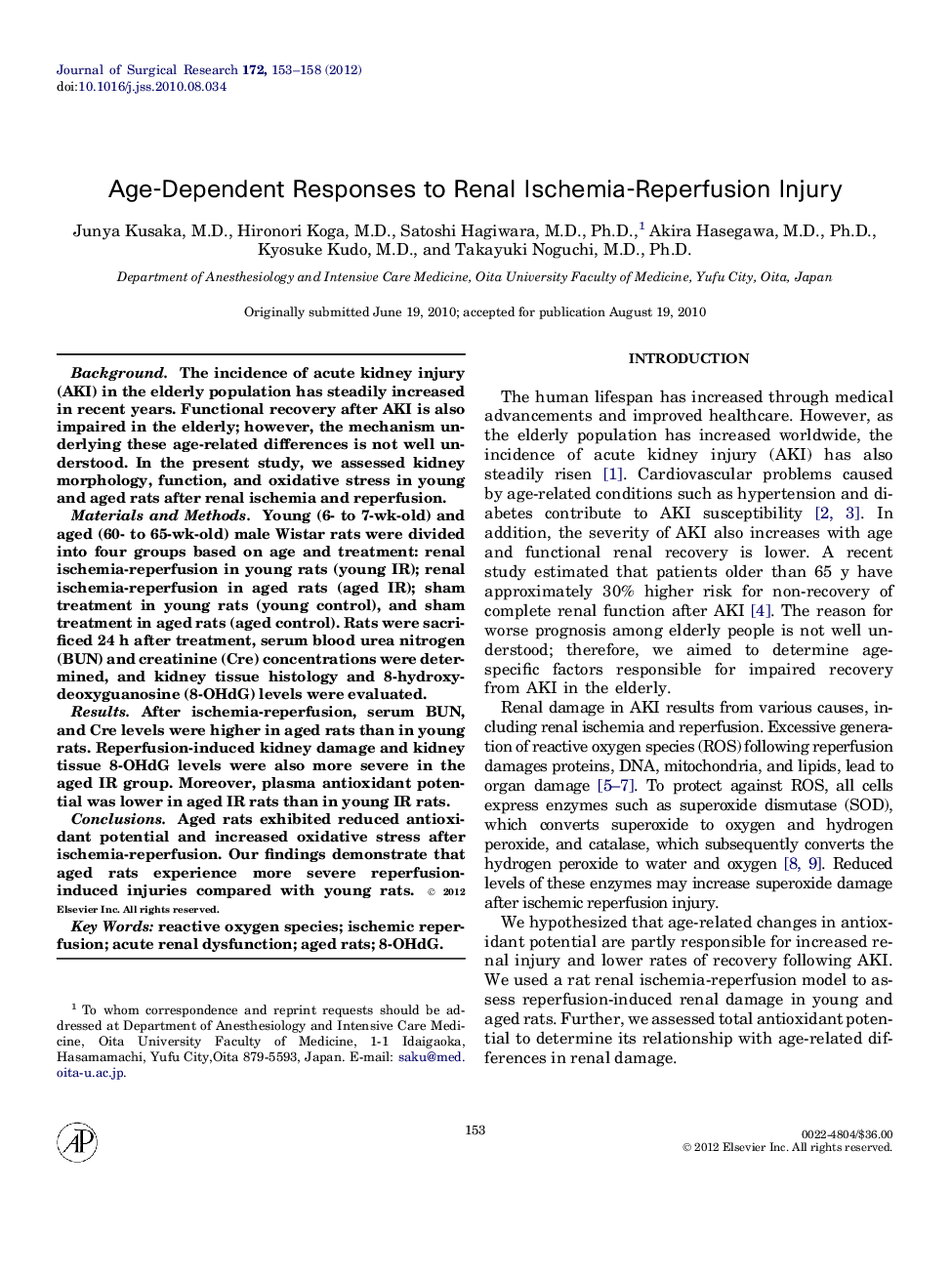| Article ID | Journal | Published Year | Pages | File Type |
|---|---|---|---|---|
| 4301995 | Journal of Surgical Research | 2012 | 6 Pages |
BackgroundThe incidence of acute kidney injury (AKI) in the elderly population has steadily increased in recent years. Functional recovery after AKI is also impaired in the elderly; however, the mechanism underlying these age-related differences is not well understood. In the present study, we assessed kidney morphology, function, and oxidative stress in young and aged rats after renal ischemia and reperfusion.Materials and MethodsYoung (6- to 7-wk-old) and aged (60- to 65-wk-old) male Wistar rats were divided into four groups based on age and treatment: renal ischemia-reperfusion in young rats (young IR); renal ischemia-reperfusion in aged rats (aged IR); sham treatment in young rats (young control), and sham treatment in aged rats (aged control). Rats were sacrificed 24 h after treatment, serum blood urea nitrogen (BUN) and creatinine (Cre) concentrations were determined, and kidney tissue histology and 8-hydroxydeoxyguanosine (8-OHdG) levels were evaluated.ResultsAfter ischemia-reperfusion, serum BUN, and Cre levels were higher in aged rats than in young rats. Reperfusion-induced kidney damage and kidney tissue 8-OHdG levels were also more severe in the aged IR group. Moreover, plasma antioxidant potential was lower in aged IR rats than in young IR rats.ConclusionsAged rats exhibited reduced antioxidant potential and increased oxidative stress after ischemia-reperfusion. Our findings demonstrate that aged rats experience more severe reperfusion-induced injuries compared with young rats.
